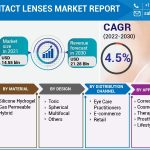This website uses cookies so that we can provide you with the best user experience possible. Cookie information is stored in your browser and performs functions such as recognising you when you return to our website and helping our team to understand which sections of the website you find most interesting and useful.

Strategies for Correcting Presbyopia with Multifocal Lenses and Monovision

Understanding Presbyopia:
Presbyopia typically emerges around the age of 40, affecting the eye’s ability to focus on close objects due to changes in the lens’ flexibility. Traditional solutions involve reading glasses, but advancements in corrective lenses provide more versatile options.
Multifocal Lenses:

Multifocal contact lenses represent a groundbreaking approach to address presbyopia comprehensively. These lenses, similar to multifocal eyeglasses, contain different prescription powers within a single lens. They enable clear vision for varying distances, eliminating the need for constant switching between glasses.
Advantages of Multifocal Lenses:
- Seamless Transition: Multifocal lenses seamlessly transition between near, intermediate, and far distances, providing a more natural visual experience.
- Freedom from Reading Glasses: Users experience freedom from dependency on reading glasses, simplifying daily activities.
- Enhanced Convenience: Multifocal lenses accommodate diverse vision needs, catering to both work-related tasks and leisure activities.
Monovision Approach:
Monovision takes a different approach by using a combination of contact lenses with different prescriptions. One eye is corrected for distance vision, while the other is set for near vision. The brain adapts to prioritize the clearer image, offering a balanced vision experience.
Benefits of Monovision:
- Adaptive Brain Function: Over time, the brain adapts to the monovision correction, seamlessly switching between eyes for different tasks.
- Reduced Dependency on Reading Glasses: Monovision often reduces the need for reading glasses, especially in everyday scenarios.
Choosing the Right Strategy:
Individual preferences, lifestyle, and visual demands play crucial roles in selecting the most suitable strategy. Consulting with an eye care professional is essential to determine the optimal correction method based on an individual’s unique vision profile.
Factors to Consider:
- Daily Activities: Assessing the nature of daily activities helps determine whether multifocal lenses or monovision is a better fit.
- Comfort Level: Personal comfort and adaptability to different correction methods influence the success of the chosen strategy.
- Eye Health: The overall health of the eyes and any pre-existing conditions may impact the choice between multifocal lenses and monovision.
Color Deficiency Correction:
In addition to addressing presbyopia, modern corrective lenses extend their capabilities to correct color deficiency, commonly known as color blindness. Specialized lenses, such as color-correcting contact lenses, aim to enhance color perception for individuals with specific types of color vision deficiencies.
Benefits of Color-Correcting Lenses:
- Improved Color Discrimination: These lenses enhance the ability to differentiate between specific colors, enriching the visual experience.
- Enhanced Color Spectrum: Color-correcting lenses expand the perceived color spectrum, allowing wearers to appreciate a broader range of hues.
The evolving landscape of corrective lenses offers diverse strategies to enhance visual acuity and address specific vision challenges. Whether correcting presbyopia through multifocal lenses, adopting a monovision approach, or enhancing color perception, individuals can tailor solutions to their unique needs, providing a clearer and more comfortable vision experience.












